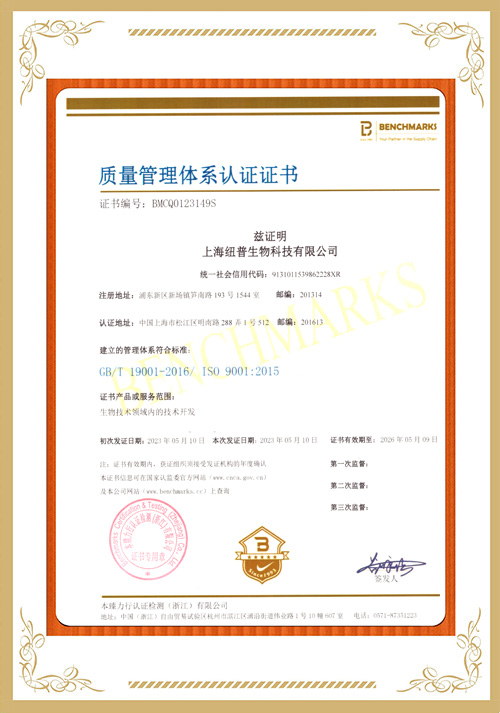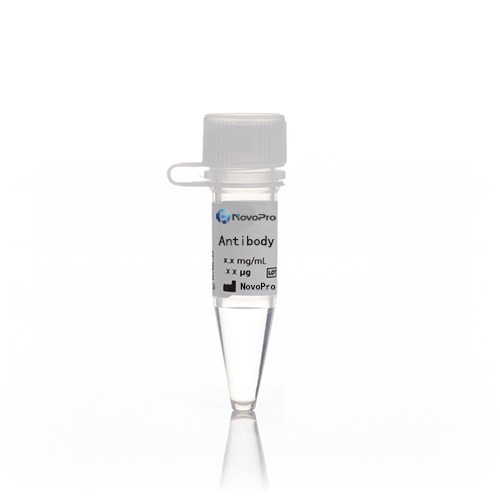- 抗体类型:多克隆
- 抗体来源:兔
- 抗体应用:ELISA, WB, IHC, IF, IP, FC
- 特异性:Human; other species not tested.
产品详情
-
产品名称
APOL1 antibody
-
抗体类型
多克隆
-
抗体来源
兔
-
抗体亚型
兔IgG
-
抗体描述
APOL1 Rabbit Polyclonal antibody. Positive WB detected in human blood tissue, A2780 cells, A549 cells, HeLa cells, HepG2 cells, MCF7 cells, SKOV-3 cells, SW 1990 cells. Positive IP detected in HepG2 cells. Positive IHC detected in human kidney tissue, human liver tissue, human pancreas tissue, human spleen tissue, human testis tissue. Positive IF detected in HepG2 cells. Positive FC detected in HepG2 cells. Observed molecular weight by Western-blot: 39 kDa
-
抗体应用
ELISA, WB, IHC, IF, IP, FC
-
应用推荐
Recommended Dilution:
WB: 1:200-1:2000
IP: 1:200-1:2000
IHC: 1:20-1:200
IF: 1:10-1:100
-
特异性
Human; other species not tested.
-
蛋白别名
APO L, APOL, APOL I, APOL1, Apolipoprotein L, Apolipoprotein L I, apolipoprotein L, Apolipoprotein L1
-
制备方法
This antibody was obtained by immunization of APOL1 recombinant protein (Accession Number: BC017331). Purification method: Antigen affinity purified.
-
组分
PBS with 0.1% sodium azide and 50% glycerol pH 7.3.
-
储存方法
Store at -20℃. DO NOT ALIQUOT
-
背景介绍
Human apolipo-protein L1 (APOL1) is a minor component of plasma high density lipoprotein (HDL) particles, acting as an interacting protein of apolipoprotein A1 (ApoA1). The human ApoL protein family was thought to be predominantly involved in lipid transport and metabolism. APOL1 is also involved in host innate immunity against Trypanosoma parasites. Once activated, APOL1 can lyse the parasite and protect human from infection. Genetic variants in APOL1 gene, which are found in African ancestry with high frequency, associate with chronic kidney disease, like focal segmental glomerulosclerosis (FSGS), HIV-associated nephropathy (HIVAN), and hypertensive nephropathy. APOL1 share structural and functional similarities with proteins of the Bcl-2 family and may has roles in apoptosis and autophagy. It is notable that APOL1 exists only in human and a few other primate species, and mouse does not express an APOL1 orthologue. This antibody recognizes the endogenous APOL1 of 39-45 kDa in blood lysate.
-
参考文献
- Molina-Portela MP, Samanovic M, Raper J. Distinct roles of apolipoprotein components within the trypanosome lytic factor complex revealed in a novel transgenic mouse model. The Journal of experimental medicine. 205(8):1721-8. 2008.
- Thomson R, Molina-Portela P, Mott H, Carrington M, Raper J. Hydrodynamic gene delivery of baboon trypanosome lytic factor eliminates both animal and human-infective African trypanosomes. Proceedings of the National Academy of Sciences of the United States of America. 106(46):19509-14. 2009.
- Sun HY, Chen SF, Lai MD. Comparative proteomic profiling of plasma very-low-density and low-density lipoproteins. Clinica chimica acta; international journal of clinical chemistry. 411(5-6):336-44. 2010.
- Thomson R, Genovese G, Canon C. Evolution of the primate trypanolytic factor APOL1. Proceedings of the National Academy of Sciences of the United States of America. 111(20):E2130-9. 2014.
- Heneghan JF, Vandorpe DH, Shmukler BE. BH3 domain-independent apolipoprotein L1 toxicity rescued by BCL2 prosurvival proteins. American journal of physiology. Cell physiology. 309(5):C332-47. 2015.


